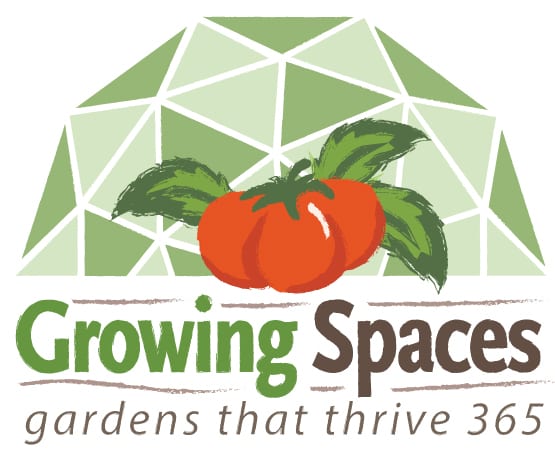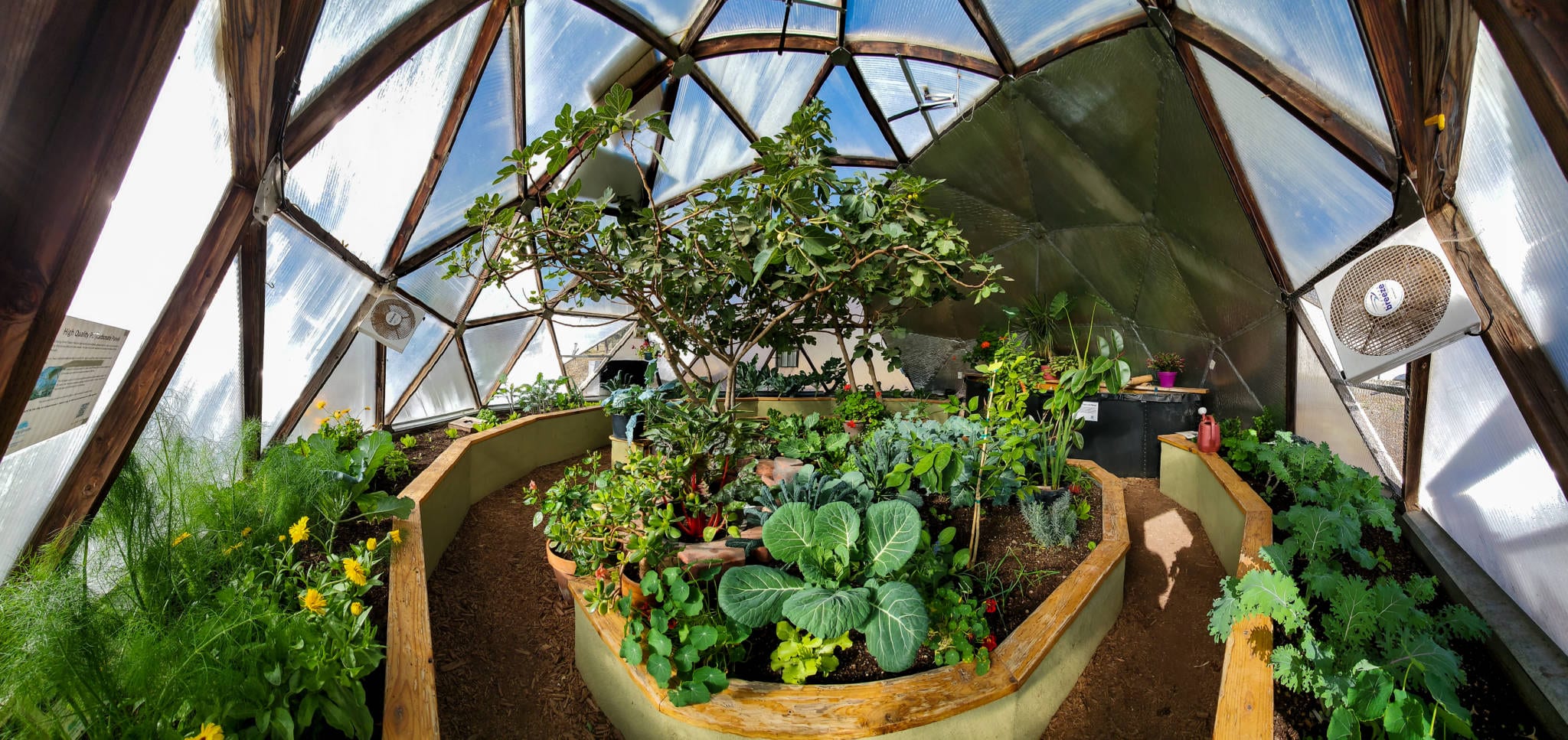
The Importance of Ventilation in Your Geodesic Dome Greenhouse
We often stress the importance of proper ventilation in Dome Greenhouses. This is because ventilation is the main component in a healthy, happy greenhouse garden. Without it, your greenhouse and plants will be exposed to a multitude of problems. Greenhouse ventilation helps prevent fungal infections and provides plants with the fresh air they need to respirate, photosynthesize and grow strong. It also aids in regulating temperature and humidity levels.
Understanding why greenhouse ventilation is so important will help you make the best choices on how and when to open doors, adjust vents and thermostats, and turn on fans.
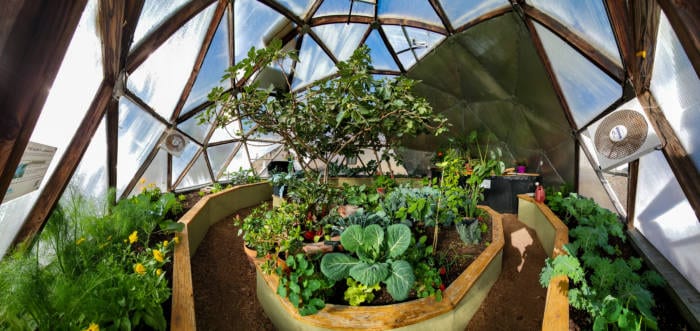
Fresh Air and Respiration
Plants ‘breathe’. The leaves of your plants inhale oxygen and exhale carbon dioxide through the process of respiration. While during the day, photosynthesis causes plants to absorb carbon dioxide and produce oxygen.
In general, there will be less photosynthesis happening in the winter and less respiration happening in the summer. Different day lengths and weather conditions can cause different gaseous imbalances that can stress and weaken your plants. There is no better safeguard against depletion of oxygen or carbon dioxide than regular ventilation, in both winter and summer.
Fungal Infections
Fungal infections are the number one challenge for indoor gardeners. Some plants are more susceptible to them than others, but all plants can get fungal or ‘mildew’ infections. They spread through spores in the air. These spores are usually concentrated in tiny quantities and proliferate quickly when given the optimal growing conditions of wet, warm, protected spaces like your greenhouse.
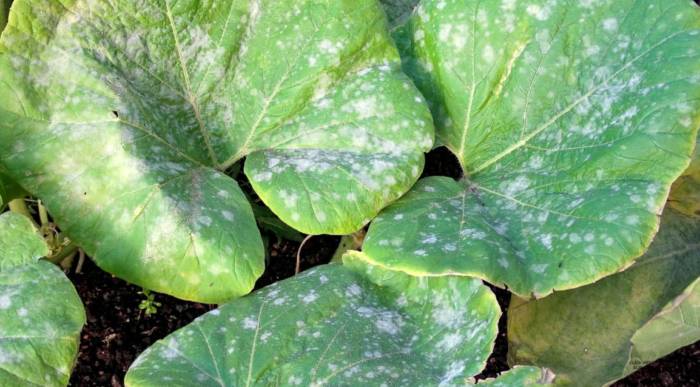
Funguses are essentially nature’s air-born decomposers. They will decompose almost any natural materials they land on, given the right environment. Once they infect your garden, they also infect soil and any natural materials in your greenhouse’s structure, like the struts. By adequately ventilating, you can prevent fungal infections before they begin and ensure your Growing Spaces greenhouse will withstand the test of time.
If you are currently struggling with a fungal infection, refer to our article Powdery Mildew and Fungal Infections.
Humidity and Temperature Regulation
Although humidity helps stabilize temperature and support soil health, too much moisture in very warm spaces can contribute to disease in your garden. Regular ventilation and moving air is the best way to stabilize humidity levels and support plant health. Ventilating and air movement whenever possible, even through the winter, will be the key to healthy year-round gardening in your dome.
If you are having a hard time cooling a greenhouse and you are interested in learning more about evaporative cooling, for temperature regulation, please refer to our article How to Cool Your Greenhouse.
Air Movement and Circulation
Our immune function is dependent on a kind of experience in fighting off invaders, our muscles are dependent upon exercise to increase their strength, and so forth. Plants are the same.
A healthy greenhouse environment is a very protected space where gardens do not experience the adversities of natural life that all plants on earth have evolved to endure. Such as the full force of ultraviolet radiation, the impact of wind, pounding rain, many kinds of insects, and ever-changing soil conditions. Science has proved that all living organisms, including humans, are strengthened by healthy adversity.
One of the best and most effective ways of improving the strength and resilience of your plants is moving air. If the air ruffles your plants’ leaves, the plants are forced to develop a sturdy structure, therefore reinforcing them against disease and weakness.
Often plants who don’t experience adversity get leggy and spindly in greenhouse environments as they reach for the light in darker winter months or stormy summer months. Air movement reinforces them in these situations and ensures a more healthy, abundant garden.
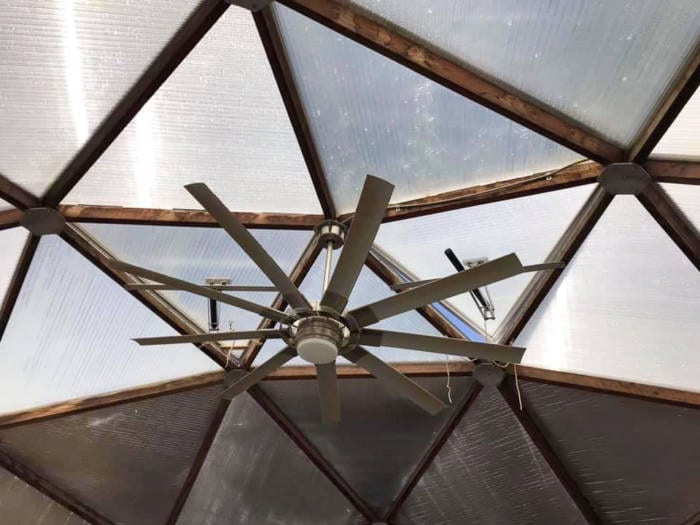

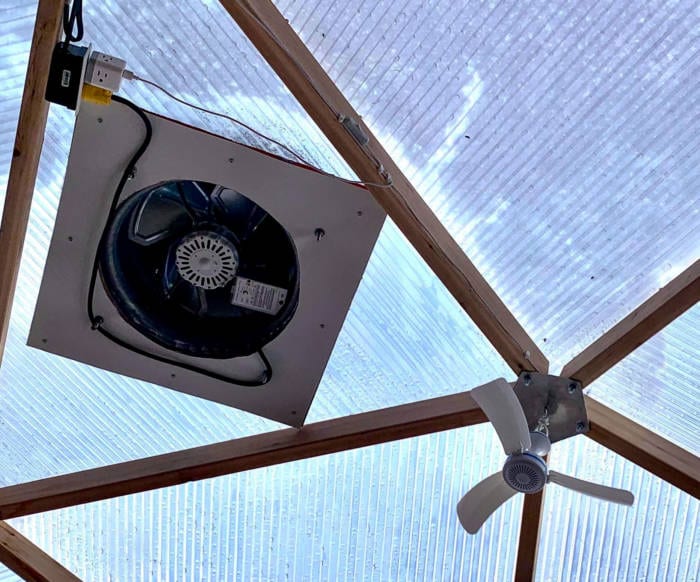
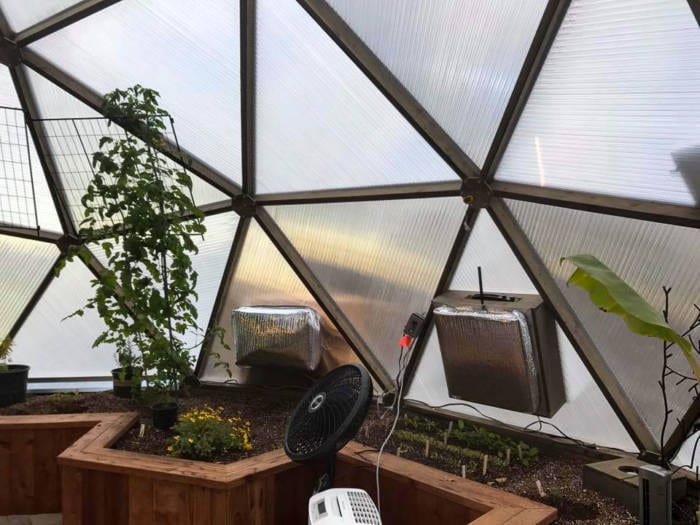
If you have electricity in your Growing Dome, we encourage you to add fans to our dome to improve air circulation if needed. Oscillating fans are a great option to ensure all of your plants are exposed to moving air to condition your plants. Hanging ceiling fans will help circulate warm air above with the cooler air below and provide consistent air movement inside the dome. If you have regular fans, we encourage you to point them perpendicular to the intake fans, to create a circular air movement around the dome.
Passive Air Flow
Smaller Growing Dome Kits come standard with automatic vent openers that create passive airflow, bringing in cooler air from the ground and allowing hot air to escape from the top vents.
15′ – two bottom Univents, one top Bayliss vent, and a ½ lite vented door
18′ – two bottom Bayliss vents, one top Gigavent vent, and a ½ lite vented door
22′ – two bottom Univents, two top Bayliss vents, and a ½ lite vented door
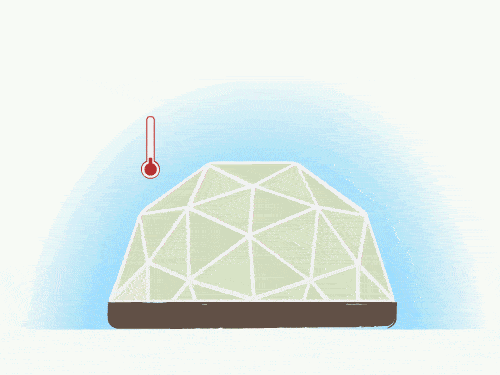
Active Air Flow
Larger domes come standard with fans to provide more active ventilation, again drawing air inside the dome from the ground and exhausting air out from the top.
26′ – two bottom Bayliss and one solar fan or one electric fan for intake. Also, two top Gigavents for exhaust, or upgrade to one top solar attic fan.
33′ – one electric fan, or two solar fans if the solar cooling upgrade is purchased, for intake. One solar attic fan at the top of the dome for exhaust.
42′ – two electric fans, or three solar fans if the solar cooling upgrade is purchased, for intake. Two solar attic fans at the top of the dome for exhaust. Two ½ lite vented doors come standard.
We encourage you to add ventilation depending on your climate. If your dome is protected from the wind outside, or you don’t get a lot of wind in your area, you may want to consider adding more active ventilation. But if your dome does get natural wind, passive ventilation through the vents and doors is surprisingly effective.
With awareness of your plant’s needs for air movement and ventilation and a little bit of creativity, you can create an oasis inside your Growing Dome and enjoy harvesting from your own garden year-round for many years to come.
FAQ
Does a greenhouse need ventilation?
Greenhouse ventilation helps prevent fungal infections and provides plants with the fresh air they need to respirate, photosynthesize and grow strong. It also aids in regulating temperature and humidity levels.
Do I need a fan in my greenhouse?
Fans in your greenhouse provide active circulation in your greenhouse as opposed to passive ventilation from vents and windows. Fans are beneficial in areas that do not get much natural air flow, or if you have a larger greenhouse with a large volume of air that needs to be circulated.
What is the best airflow in a greenhouse?
A good rule of thumb is to exchange one volume of air in the greenhouse every 1 to 3 minutes (60 – 180 seconds.) Calculate the volume of air in your greenhouse in cubic-feet, and divide it by the total CFM (Cubic feet per minute) from your fans. This will give you the air exchange rate per minute.
